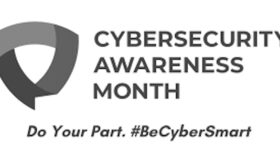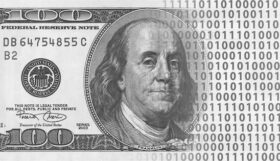What is Multi-Factor Authentication?
We have seen passwords attacked and broken time and time again. Black people are like everybody else, making the same passwords mistakes. Mistakes like using the same password at multiple websites and making your password simple to remember and just as easy to guess. I mean really, some passwords are just stupid.
I preach it over and over again to black people everywhere. Stop using passwords and start using pass phrases. Long passwords with lots of number and characters. And if you do it right its easy to remember.
Well let me share the latest news with you so you can be ready when it catches up to you. The password is dead. The age of a single password sign on is rapidly coming to a close. If you read the news of the Russian hackers who stole over a billion passwords then you know it has to stop.
Enter multi-factor authentication. At AACR I pride myself on taking the techno-babble out and giving my readers simple and easy to understand information that they can make use of. Let’s talk about multi-authentication.
There three kinds or authentication. They are as follows;
- Single factor authentication – This is something a user knows, usually a password. As I said, that is dead.
- Two-factor authentication – This is something the user has and includes a password. You are probably already using two factor authentication every time you make a purchase. You slide your card then enter a four number PIN. That is two factor authentication you use everyday.Many companies use a digital fob. You may have seen one hanging on a somebody’s key ring. The user will use their password and the numbers that appear on the fob to get access to a computer or files. Other companies and the federal government require the user to use an identity card with a chip. The user will place the card into the computer to make it work. And even more secure systems will use a biometric device such as a fingerprint reader. The RSA SecurID fob is the most commonly seen form of two factor authentication. But some of you may have a fingerprint reader on your computer, tablet or cell phone. And some computers have facial recognition software loaded on them as well.
- Three-factor authentication –The final factor combined with the two previous factors is “something a user is.” Examples of a third factor are all biometric profiles such as the user’s voice, hand size, a fingerprint, or the retina scan which is the most common.
But As I have said before the single password is dead. You can start using this now on many popular websites and email services. As matter of fact your bank may already offer two factor authentication. If you want to know what websites and banks offer two factor authentication then please visit Twofactorauth.org to see their list.
Other technology companies and email services also offer two factor authentication. Here are a few examples.
Google/Gmail: Google will send you a 6-digit passcode to your listed phone. The Google Play Store offers Google’s Authenticator app here for Android, iOS, and BlackBerry.
Apple: Apple also sends a 4-digit code to your phone. In addition you can enable Apple’s Find My iPhone app . This app notifies you when you, or someone else, attempts to log in from a new machine.
Facebook/Twitter: Facebook and Twitter both dispatch a 6-digit code to your phone when you attempt to log in from a new machine.
PayPal: DO you use PayPal when shopping online (and who doesn’t)? PayPal will also send you a 6-digit code to your phone. If you shop online at all then you better be using two factor authentication already.
Microsoft Accounts: Microsoft issues a 7-digit code to your phone or and alternate email address. Microsoft’s two-step authentication also protects your other accounts such as Sky Drive (Personal Documents, Photos etc.) and Outlook emails.
Two factor authentication is something I urge black people to get on board early. I sincerely believe that it is just a matter of time before most websites make it a requirement. The incidence of thefts and hacking has become too great to ignore much longer. African-Americans who wish to keep their personal data and money safe will heed my advice. Take the time to check all your online accounts that support two-factor authentication and enable the function immediately.
Now you know.







